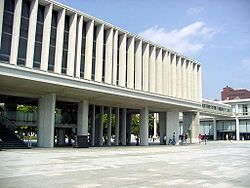This article relies largely or entirely on a single source .(June 2020) |

A peace museum is a museum that documents historical peace initiatives. Many peace museums also provide advocacy programs for nonviolent conflict resolution. [1] This may include conflicts at the personal, regional or international level.